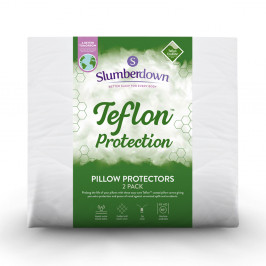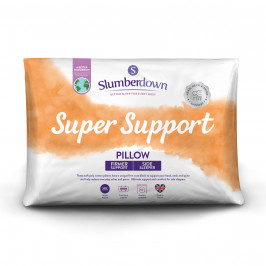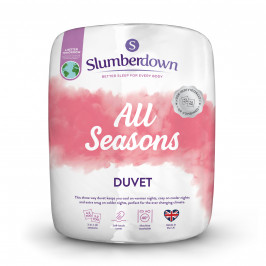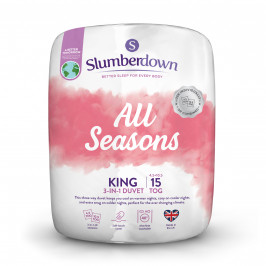The Best Way to Store Duvets
For many of us, no winter is complete without pulling out our trusty duvets and warming up under layers of soft, comfortable down. Even though duvets have a reputation for lasting years, we still need to take care of them. When it comes to the best way to store duvets, there’s a proper and improper way to do it.
Our bedding at Sleepseeker can live to extraordinary lengths if we follow the proper care and maintenance guidelines. Storing duvets in the summer or an extended trip should be high on our list of yearly to-dos. In this blog, we’ll cover all the best tips for storing your duvet.
Wash your duvets first
Duvets are some of the bulkiest bedding items in our homes. They need just as much care as our delicate bedding sheets and pillows, perhaps even more!
If you’re in the habit of packing away your duvet in a large storage bag and leaving it in a closet for six months, it’s time to treat your duvets with a little more attention. Duvets are some of the more expensive bedding in most homes.
The first thing to do before storage is to clean your duvet. Learning how to wash a duvet and dry it afterwards lowers the chance of mould growth in warmer months. Make sure to remove the duvet cover before laundering it. Duvet covers should always have separate locations in your storage area.
The way you wash your duvet will depend on the type of filling it has. Down duvets are the most critical to wash before storage. The delicate fibres in these fillings collect bacteria and harmful mould particles much more rapidly than synthetic down fills.
If the duvet is too big for your washing machine, washing by hand is a good alternative. A laundry is a backup if your home machine is too small. Regardless of the filling, we recommend you launder all duvets before storing them away for the summer.
Neatly fold your duvet once dry
Before storing your duvet, give the surface a once over and remove any stray dust and dirt lingering on the covering. Once the surface is clean and washed, dry the duvet for at least two hours.
Air drying your duvet is preferable to tumble drying. Organic feather duvet fillings don’t fare well in the intense heat of dryers, and the down can gather to the edges of the duvet under the extreme speed of the tumbling. Try not to hang your duvet when drying. The down fibres will naturally drop to the bottom of the duvet and give you an uneven fill.
The next step is to fold your duvet. Ideally, you’d store a duvet flat without folding it at all. But hardly any of us have that kind of space. The best folding technique for duvets is to roll the fabric in a tight, compact tube. You’ll save more space with a rolling approach than a traditional folded pattern, and it’s easier to store duvets into vacuum packs as a roll.
If the duvet is too large to roll up in a regular tube, fold the textile normally, placing sheets of acid-free paper between the layers. An acid-free paper should also line the parts of the duvet where folds appear. They will reduce the chance of fold lines becoming permanent.
5 storage solutions for duvets
There are only a few steps needed to store a duvet properly, including cleaning the surface, washing and air drying it. Once complete, store your duvet by rolling it into a compact, regular shape and placing it in a clear vacuum pack. Below, we share five more solutions to help you store your favourite duvets, comforters, and quilts.
1. Store in a cool, dry cupboard or closet
Duvets belong in a closet or cupboard with a cool, dry climate, just as you’d store your lighter-weight fabrics and bedding in a cool place. Temperate conditions reduce the chance of mould or harmful bacteria from growing in and on a duvet. It’s important to drive off these dangerous threats because organic down duvets can attract them.
2. Use a storage bag under your bed
Many of our closets are already over-stuffed with clothes and essentials. A massive duvet is sometimes impossible to hide away until winter. The space under your bed is an ideal location to store a large duvet. The temperature in a bedroom is cool enough to stifle mould growth, and the low light conditions drive off humidity.
3. Vacuum pack your duvet
If there’s one tip everyone should know about the best way to store duvets, it’s the importance of vacuum packing. However, you have to choose the right ones. Always opt for clear vacuum packs over black ones as black bags have poor air ventilation properties. Clear bags won’t protect your duvet from harmful sunlight though, so make sure to store your bedding in the dark.
If you don’t have a vacuum storage pack available, use a breathable linen bag or wrap the duvet in natural cotton. These solutions won’t keep out insects and dust mites, but they will preserve the natural or synthetic down filling quite well.
4. Store in a bin liner or bin bag
Without vacuum bags at home, we recommend storing your duvet in a bin liner or bin bag. Your duvet won’t have the same level of compactness that vacuum bags offer, but bin bags are a good alternative if you properly fold the duvet into a tight tube.
5. Store in a suitcase
You can store your duvet in a large suitcase or sealable piece of luggage as a last resort. We don’t recommend this solution very often because you’ll have little ventilation with a suitcase. It might be tricky to find a suitcase large enough to contain your duvet without overstuffing it and damaging the fill.
Key takeaways
Duvets require very little upkeep, but it’s critical to get the storage right. The best way to store duvets is easy:
- Before storing, make sure the duvet is clean and 100% dry
- Find a location for your duvet that’s dark, cool, and dry
- Fold the duvet as compactly as possible
As always, check the instructions on your bedding for any special storage requirements.
At Sleepseeker, we offer a variety of bedding including summer duvets, mattress toppers, pillow protectors and mattress protectors. If you need any further advice on how to choose a duvet or drying a duvet, our friendly team at Sleepseeker are here to help.
What's trending now...
-

Slumberdown Super Support Firm Support Side Sleeper Pillow, 2 Pack
£17.00
Shop Now -

Slumberdown All Seasons Combi 15 Tog (10.5 + 4.5 Tog) Double Duvet
£30.50
Shop Now -

Slumberdown Paws for Slumber Olive Green Pet bed, Medium
£39.00
Shop Now -

Slumberdown Wonderful Wool Mattress Topper
From: £54.50
Shop Now -

Slumberdown Paws for Slumber Extra Large Pet Bed Spare Cover, Grey
£20.00
Shop Now -

Snuggledown Luxurious Hotel Cotton Waterproof Mattress Protector, Double
£23.50
Shop Now -

Slumberdown Wonderfully Warm Electric Blanket - Single
£60.00
Shop Now -

Slumberdown Teflon Pillow Protector - Pack of 2
£14.00
Shop Now -

Slumberdown Unwind Outside 2-in-1 Waterproof Cocoon Set, Burnt Orange
£30.00
Shop Now -

Slumberdown Paws For Slumber Sherpa Pet Bed, Medium
From: £25.00
Shop Now -

Slumberdown Super Support Firm Support Side Sleeper Pillow
From: £17.00
Shop Now -

Slumberdown All Seasons Combi Duvet
From: £25.50
Shop Now -

Slumberdown Paws for Slumber Medium Pet Bed
From: £39.00
Shop Now -

Slumberdown Sleep Soundly Climate Control Mattress Topper, Double
£33.50
Shop Now -

Slumberdown Paws for Slumber Extra Large Pet Bed Spare Cover
From: £20.00
Shop Now -

Snuggledown Luxurious Hotel Cotton Waterproof Mattress Protector
From: £19.50
Shop Now -

Slumberdown Wonderfully Warm Electric Blanket
From: £60.00
Shop Now -

Slumberdown Unwind Outside 2-in-1 Waterproof Cocoon Set
From: £30.00
Shop Now -

Slumberdown Body Support Pillow, 1 Pack, Includes 100% Cotton Pillow Case
£20.00
Shop Now -

Slumberdown All Seasons Combi 15 Tog (10.5 + 4.5 Tog) King Size Duvet
£34.00
Shop Now -

Slumberdown Paws for Slumber Olive Green Pet Bed, Large
£49.00
Shop Now




